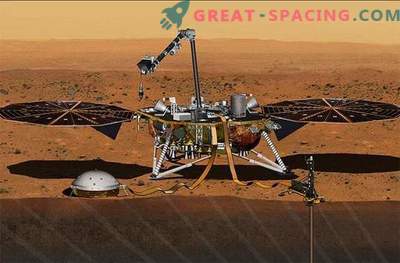
The new report says that the development of a cached return pattern for the next NASA Mars rover on a mission to the Red Planet is behind schedule. Therefore, the launch may be postponed.
If engineers do not activate the development of several key technologies, the cost of the program due to the delayed launch will increase by several million. Of particular concern is the system of collecting and storing soil and rock samples for subsequent shipment to Earth.
The audit found that five of the seven key technologies are lagging behind in development. The report says that 90% of the technical drawings that were to be completed next month were not even taken into account. What happens and how it looks?
The rover “Mars 2020” worth $ 4.2 billion is a continuation of the mission of the Martian Curiosity Science Laboratory, which began with the launch of the spacecraft to the crater Gail in August 2012.
Curiosity explores a mile-high mound of sedimentary rock, Mount Sharpe, rising from the crater. He quickly coped with the main task - to find out how much the planet resembles ours and whether there are chemical components and environment to support life on it. Analysis of the first sample showed that terrestrial microbes would find a suitable home on ancient Mars. The continuation of the mission should characterize other habitable niches for potential life and find out the best conditions under which it could survive.
Mars 2020, whose landing site has not yet been determined, will search for suitable living conditions and try to find real evidence of ancient life.
In addition to the seven scientific instruments, the rover will also have a system for collecting samples and cache memory so that future rovers or humanity can extract them and deliver them to Earth for analysis.
“There are three reasons for the shortcomings of the sampling system,” the report says. - “Firstly, the managers reported that this system is the most complex new component in the development of the project. It turns out that all decisions on it are associated with risk and will probably take a lot of time. Secondly, the risk with the sampling system leads to a delay in the development of additional mechanisms and restrictions on assembly and testing due to changes in the requirements of planetary protection and pollution control, as well as changes in the hardware design required due to performance limitations, increasing mass or volume of new drives. And, thirdly, a delay in developing a system can delay the entire launch. ” The audit showed that as of December 2016, the sampling system may not be ready for integration and testing in May 2019, as indicated in the plans.
“Late deliveries, testing and phases of launch operations can be performed with a surrogate, rather than flight hardware. Therefore, some tests will have to be repeated or even canceled. We can not accurately determine how far the system is in preparation. But this is a critically important component, without which the entire mission will not be able to advance further, ”the report says.
Missing the launch will lead to significant additional costs: storing the spacecraft, replacing degraded components and maintaining labor, as well as paying for workers' working days.
For example, the delay in launching Curiosity for 22 months cost $ 834 million. A more accurate picture of the launch of Mars 2020 will be presented after a three-day pre-project survey, which will begin on February 28.










































